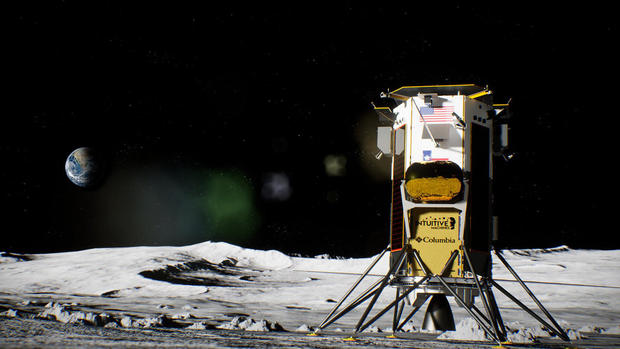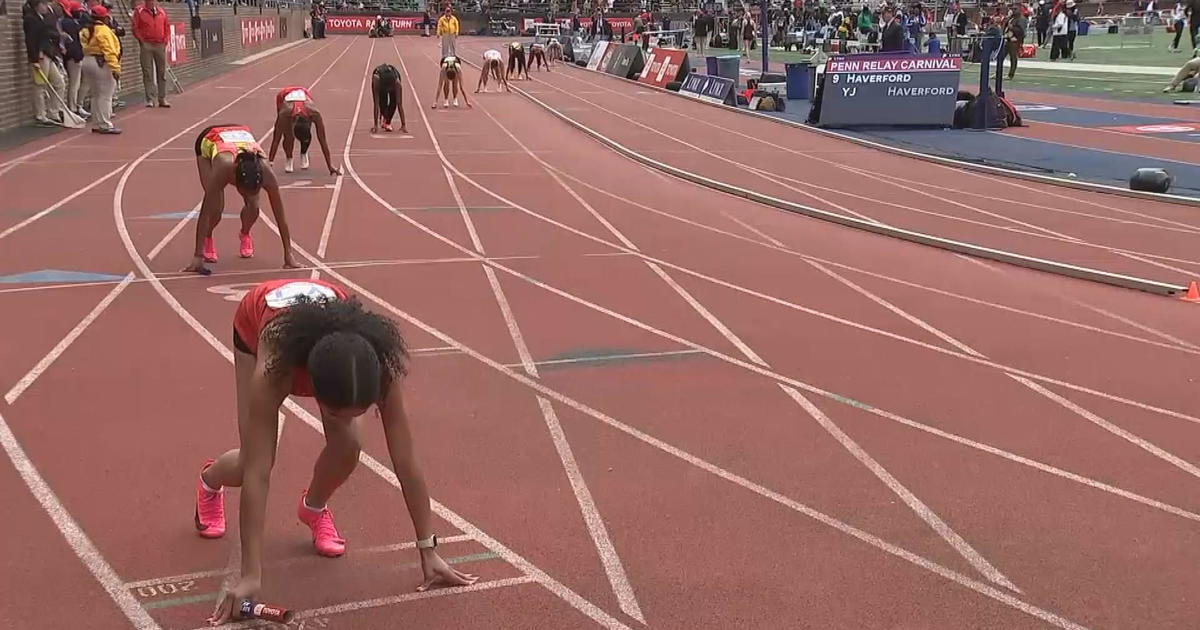Odysseus moon lander tipped over onto its side during touchdown, company says
Intuitive Machines' Odysseus moon lander, coming down faster than expected and moving slightly to one side at the moment of touchdown Thursday, apparently caught a footpad on the lunar surface and tipped over onto its side, officials said Friday.
Telemetry indicates the top of the spacecraft may be resting on a rock or the lander could be tipped over on upward-sloping terrain. But Steve Altemus, CEO and co-founder of Intuitive Machines, said Odysseus is still able to draw power from the sun and send engineering and science data back to Earth.
Engineers are in the process of downloading data and hope to downlink stored images as early as this weekend clarifying the orientation of the 14-foot-tall spacecraft.
"We're downloading and commanding data from the buffers in the spacecraft and trying to get you surface photos because I know that everyone's hungry for those," Altemus said.
In the meantime, all the lander's active instruments, provided by NASA and commercial customers, are facing away from the lunar surface and should be able to return data as planned. But it likely will take longer than expected given some of the tilted spacecraft's antennas do not face Earth.
And there's not much time. Regardless of the tip over, the sun will drop below the horizon at the landing site in a little more than one week, ending power generation by the lander's solar cells. That was always in the cards.
The spacecraft is not designed to withstand the ultra-low temperatures of the lunar night and while flight controllers will attempt to recontact the probe when the sun rises again, they do not expect Odysseus to answer.
"Three major accomplishments"
All that said, Joel Kearns, NASA's deputy associate administrator for exploration, praised Intuitive Machines for its off-kilter but still-successful landing.
"Let me congratulate Intuitive Machines for three major accomplishments," he said. "The first is for having the first successful soft landing on the moon by the United States since 1972. The second is for being the first non-government commercial organization to actually touch down safely.
"And the third is for having a touchdown point at 80 degrees south latitude, much closer to the south pole of the moon than any earlier U.S. robotic or human explorers."
That's important to NASA, which plans to send Artemis astronauts to the south polar region in the next several years to looks for possible ice deposits while establishing a long-term presence on the moon.
On Saturday, President Joe Biden commented on the milestone in a statement that congratulated NASA and the Intuitive Machines team.
"America does hard things," the statement read. "We rise to the great scientific challenges of our time. And there's nothing beyond our capacity when we work together."
Odysseus was partially funded by NASA's Commercial Lunar Services Payloads program, designed to encourage private industry to develop transportation capabilities that the agency can then use to transport payloads to the moon.
NASA paid Intuitive Machines $118 million to carry six payloads to the moon aboard Odysseus.
Launched Feb. 15 by a SpaceX Falcon 9 rocket, Odysseus braked into orbit around the moon Wednesday. Flight controllers subsequently raised the orbit slightly to correct a slight targeting error and were gearing up for landing when they ran into problems with a sensor package needed to help fine-tune the trajectory to touchdown.
Luckily for Intuitive Machines, one of the six NASA payloads on board Odysseus was intended to test a different type of navigation sensor, an instrument known as NDL, which stands for Navigation Doppler Lidar.
The NDL system operates like a radar but captures reflected laser light instead of radio waves to precisely measure vehicle velocity, direction and altitude.
Odysseus was commanded to make an additional orbit of the moon while engineers hurriedly wrote and tested software patches to integrate the NASA system into the lander's navigation algorithms.
"That's what allowed them to be successful," NASA Administrator Bill Nelson told CBS News Thursday night. "It was a NASA payload that saved the day. (But) don't take anything away from Odysseus and Intuitive Machines, because this is the first commercial lander to be able to pull off this feat."
As Odysseus closed in on its landing site, it pitched up from horizontal to a vertical orientation for the final descent to touchdown. The flight plan called for the spacecraft to land with a purely vertical velocity of just 2 mph, roughly a moderate walking pace.
Because of the unexpected lateral velocity, however, engineers believe one of the lander's six footpads either hit a rock or got caught in a crevice, causing the spacecraft to tip over.
Base on telemetry, "it has to be somewhat elevated off the surface horizontally, so that's why we think it's on a rock or the foot is in a crevice or something to hold it in that attitude," Altemus said.
The revelation that Odysseus had tipped over on touchdown came as a surprise following an overnight update from Intuitive Machines saying telemetry indicated the spacecraft was in an upright orientation. Altemus said Friday that conclusion was based on "stale data."
A more through analysis of residual propellant and data from inertial measurement units indicating the direction of gravity showed the spacecraft was, in fact, resting on its side.
The landing highlighted the risks faced by any robotic spacecraft attempting to land on unknown terrain and the challenge of autonomously navigating around rocks and other obstacles that cannot be seen from orbit.
A Japanese moon probe tipped over on touchdown last month, limiting its ability to complete the planned science agenda. Altemus and Tim Crain, Intuitive's chief technology officer, both were optimistic Odysseus can still accomplish most of its objectives.
But at least one hoped-for objective will not be met.
An experimental camera system built by students at Embry Riddle Aeronautical University, designed to be released before touchdown to capture imagery of the lander during its final descent, was not deployed as planned because of software constraints related to the guidance system problem.
The "EagleCam" package will be ejected later, Altemus said, shot out dozens of feet to one side. If all goes well, the cameras will show Odysseus resting on its side, giving engineers - and the public - the best views available of the spacecraft's orientation.






